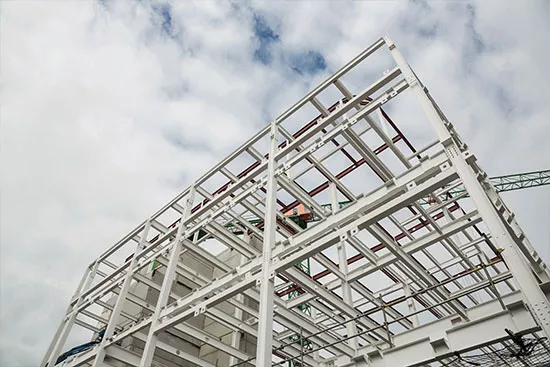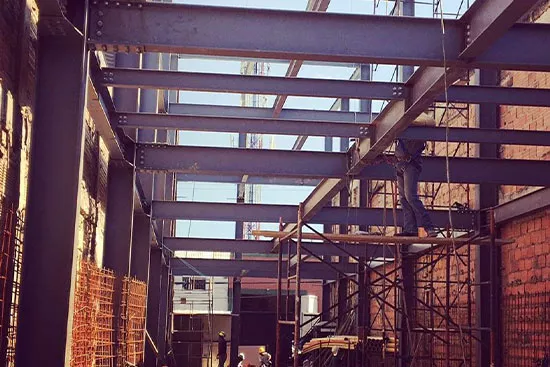Steel beam calculation
Need a beam analysis?
The beam structural analysis is an engineering process that involves determining the appropriate dimensions and properties of a steel beam so that it can handle applied loads without experiencing excessive deformations or structural failures.
This calculation is based on principles of material mechanics and aims to ensure the stability, strength, and safety of the structures where these steel beams will be used.
Key factors in the steel beam calculation
Load analysis
Steel properties
Design factors
Calculation methods
Importance of steel beam calculation
- Structural Safety: Accurate calculations ensure that the beams can withstand the anticipated loads throughout the structure’s lifespan without collapsing or causing damage.
- Economy: An efficient and well-calculated design allows for the optimization of material usage, resulting in significant economic savings in construction.
- Regulatory Compliance: Beam calculations must adhere to established engineering regulations and standards to ensure the safety and quality of constructions.
- Durability: Proper calculations take into account loading conditions and environmental factors, ensuring that the beams are durable and require minimal maintenance.
Contact us
Basic information on data protection
Responsible: Cero Metros Cuadrados, S.L.
Purposes: Manage the sending of information that you request. Sending commercial communications.
Legitimation: Consent. You can withdraw consent at any time.
Recipients: Your data will not be transferred to third parties except in case of legal obligation.
Data subject's rights: To access, oppose, rectify and have their data deleted, as well as other rights as explained in the additional information.
You can access additional and extended information at this link.
FAQ
What are the different categories of steel beams and when are each of them used?
Common categories of steel beams in Europe are IPN, IPE, and HEA. Their selection depends on the application, loading conditions, and the need for strength.
What is the difference between an IPN, IPE, and HEA beam in terms of load capacity and application?
The difference lies in the shape and design of the cross-section, which affects their load-bearing properties, stiffness, and specific applications.
How is the bending moment and shear force calculated in a steel beam?
The bending moment is calculated from the applied forces and their distances from a specific point along the beam. The shear force is calculated as the algebraic sum of all vertical forces on one side of a point on the beam.
What are the properties of steel that should be considered in the design of steel beams?
The properties of steel that are considered include yield strength, modulus of elasticity, and tensile and compressive strength.
What is the yield strength and ultimate strength of a steel beam, and how do they affect its load-carrying capacity?
The yield strength is the point at which steel undergoes permanent deformation, while the ultimate strength is the maximum stress the material can withstand before breaking.
What design considerations are important to prevent buckling in long steel beams?
It is crucial to consider the slenderness ratio and provide adequate bracing to prevent lateral buckling.
What is the importance of connections and joints between steel beams in terms of structural safety and stability?
Proper connections ensure efficient load transfer between elements and contribute to the overall stability and safety of the structure.
How are seismic and wind loads taken into account in the design of steel beams?
Considering seismic loads involves analyzing the geographic location, soil category, and the dynamic response of the structure. For wind loads, factors such as wind speed, building height and shape, and wind exposure must be taken into account.
What is the difference between a simply supported beam and a fixed-end beam, and how does this affect their load-carrying capacity?
A simply supported beam has supports at both ends that allow rotation but not horizontal or vertical movement, typically in the form of hinges. On the other hand, a fixed-end beam has at least one end that is fully restrained, preventing any movement or rotation at that point. This distinction is crucial as it significantly affects the distribution of moments and shear forces in the beam, as well as its behavior under loads and maximum deflection.
What are the allowable deformations in a steel beam, and how can they be controlled?
Allowable deformations depend on the application and use of the structure. They are controlled through proper design and adherence to specific standards.
What reinforcement methods can be used to increase the load-carrying capacity of an existing steel beam?
Additional plates, section reinforcements, or even external reinforcements like structural profiles can be used to increase the load-carrying capacity of the beam.



